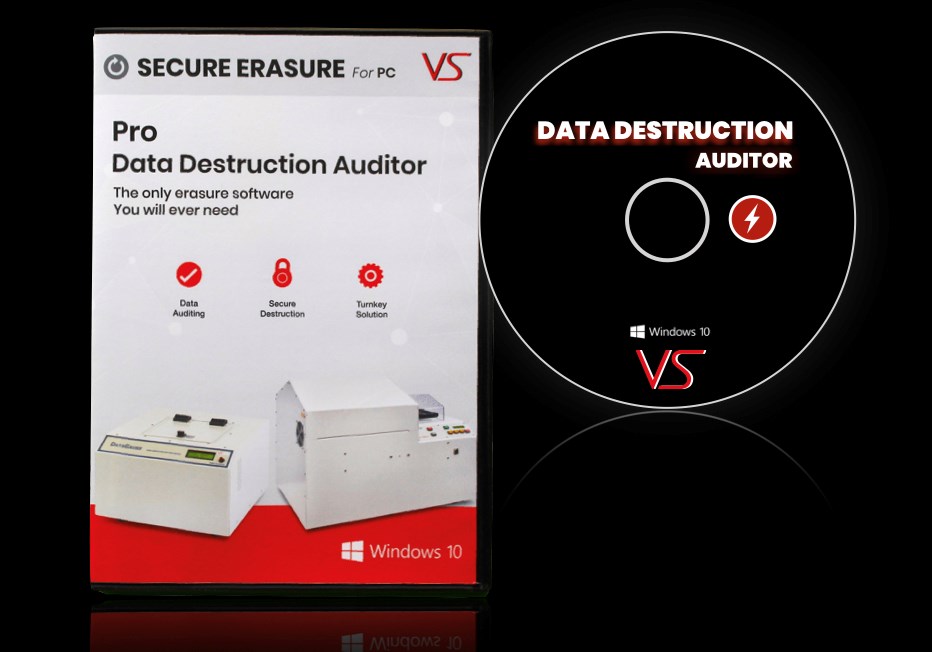Top Tips for Ensuring Secure Data Destruction in Your Cyber Security Plan
Top Tips for Ensuring Secure Data Destruction in Your Cyber Security Plan
Blog Article
Exploring the Importance of Data Destruction in the Context of Computer Safety And Security Services and Protecting Confidential Data
In an era where data breaches are increasingly usual, the significance of effective data devastation can not be overstated. What approaches can organizations carry out to boost their information damage protocols?
Comprehending Information Devastation
Data destruction is an essential component of computer protection that involves the permanent elimination of information from storage space tools to stop unauthorized gain access to and possible data breaches. In an increasingly digital landscape, organizations deal with increased threats related to sensitive information being incorrectly accessed or made use of. Reliable information devastation safeguards against these risks, making sure that personal dataâEUR" such as customer info, copyright, and economic recordsâEUR" can not be recovered after disposal.
Understanding the value of data destruction prolongs past mere conformity with regulative and legal structures; it is essential for keeping business honesty and trust. When information is poorly taken care of or inadequately ruined, the consequences can be serious, consisting of financial loss, reputational damages, and legal obligations.

Techniques of Data Eradication

One widespread approach is information wiping, which involves overwriting existing data with random patterns several times. This method provides the initial information irretrievable, making it a popular option for companies looking for to secure secret information.
An additional method is degaussing, which makes use of a powerful electromagnetic field to interrupt the magnetic domain names on storage gadgets, successfully eliminating the information. This approach is particularly effective for magnetic media however is not suitable to solid-state drives.
Physical destruction is an additional durable technique, crushing or entailing the shredding of storage tools. This approach guarantees that data healing is practically difficult, making it ideal for extremely delicate information.
Finally, encryption can function as a complementary approach to information obliteration. By encrypting information prior to deletion, companies can add an added layer of protection, guaranteeing that also if residues are recuperated, they continue to be unattainable without the decryption secret. Each approach ought to be picked based on the degree of information sensitivity and the particular security needs of the organization.
Legal Conformity and Information Safety And Security
Organizations must browse a complicated landscape of lawful demands associated with information protection, particularly after executing approaches of information elimination. Different guidelines, such as the General Data Defense Law (GDPR) and the Health And Wellness Insurance Mobility and Responsibility Act (HIPAA), impose rigorous standards on exactly how organizations have to get rid of and handle of sensitive information. Failure to conform with these laws can lead to considerable lawful repercussions, including significant penalties and reputational damage.
Information destruction processes need to be meticulously documented to demonstrate conformity with appropriate legislations and criteria. This documentation not only offers as proof of adherence to lawful obligations yet additionally shows a dedication to guarding delicate details. Organizations must likewise establish clear policies regarding information retention and devastation timelines, making certain that data is not held longer than essential.

Additionally, normal audits and assessments of data damage methods are vital to preserve conformity and adjust to advancing lawful structures Get the facts (data destruction). By proactively attending to lawful demands, organizations can alleviate threats connected with information breaches and demonstrate their commitment to data protection. Ultimately, prioritizing lawful conformity in information destruction processes is not simply a governing obligation, however a basic facet of a robust data protection approach
Impact on Service Reputation
The track record of a company can be significantly impacted by its approach to information destruction and administration. In today's digital landscape, where data violations can occur anytime, the failing to appropriately get rid of delicate information can bring about severe effects. Organizations that inadequately handle data damage threat subjecting private customer information, which not just violates personal privacy regulations but additionally erodes depend on amongst clients and stakeholders.
A ruined track record can result in reduced client commitment, as clients end up being reluctant to engage with a service that has actually demonstrated oversight in securing their information. Adverse attention surrounding a data violation can have a long-term effect, as prospective customers might be prevented by the perceived lack of security. This can lead to a direct decrease in income and market share.
Furthermore, organizations that focus on information destruction as component of their safety and security strategy can boost their track record by showcasing their commitment to guarding sensitive info. By taking on rigid data administration practices, organizations can not only reduce dangers but additionally position themselves as reliable entities in their particular industries, therefore strengthening their overall brand photo.

Best Practices for Secure Disposal
Executing best methods for safe disposal of information is essential for mitigating threats related to data violations and ensuring compliance with personal privacy policies. Organizations must take on a detailed data disposal plan that lays read the article out procedures for both physical and digital information damage.
For physical information storage tools, such as disk drives, shredding or degaussing is advised to avoid information recovery. In addition, organizations need to preserve a chain of protection documentation throughout the disposal procedure, making sure accountability and traceability of disposed things.
For electronic information, utilizing software program that complies with market standards for data cleaning is important. This software program should overwrite existing information numerous times, making recovery basically impossible. It is likewise vital to verify the efficiency of the information damage procedure via audits or third-party assessments.
Training staff members on secure disposal methods includes another layer of safety, as visit this site human mistake can typically result in information direct exposure. Consistently assessing and updating disposal plans makes certain positioning with advancing regulations and technical advancements. By implementing these best methods, companies can significantly decrease the threat of unapproved data access and improve their total information protection strategy.
Final Thought
To conclude, data destruction is a fundamental aspect of computer system security services that ensures the protection of secret information from unapproved accessibility. Executing effective methods of information eradication, adhering to legal compliance, and acknowledging the impact on service credibility are vital components of an extensive information protection approach. By taking on ideal practices for secure disposal, organizations can promote depend on with customers and protect delicate data, ultimately adding to an extra safe digital landscape.
In a period where information breaches are significantly common, the significance of reliable data devastation can not be overstated.Information damage is a vital component of computer system safety and security that involves the irreversible elimination of information from storage tools to avoid unapproved gain access to and prospective data breaches. Organizations needs to likewise develop clear policies regarding information retention and destruction timelines, making certain that data is not held longer than necessary.
By proactively resolving legal needs, organizations can alleviate dangers linked with data breaches and show their dedication to data safety (data destruction). Ultimately, focusing on legal compliance in information destruction procedures is not simply a regulative commitment, but a basic aspect of a durable information safety and security approach
Report this page